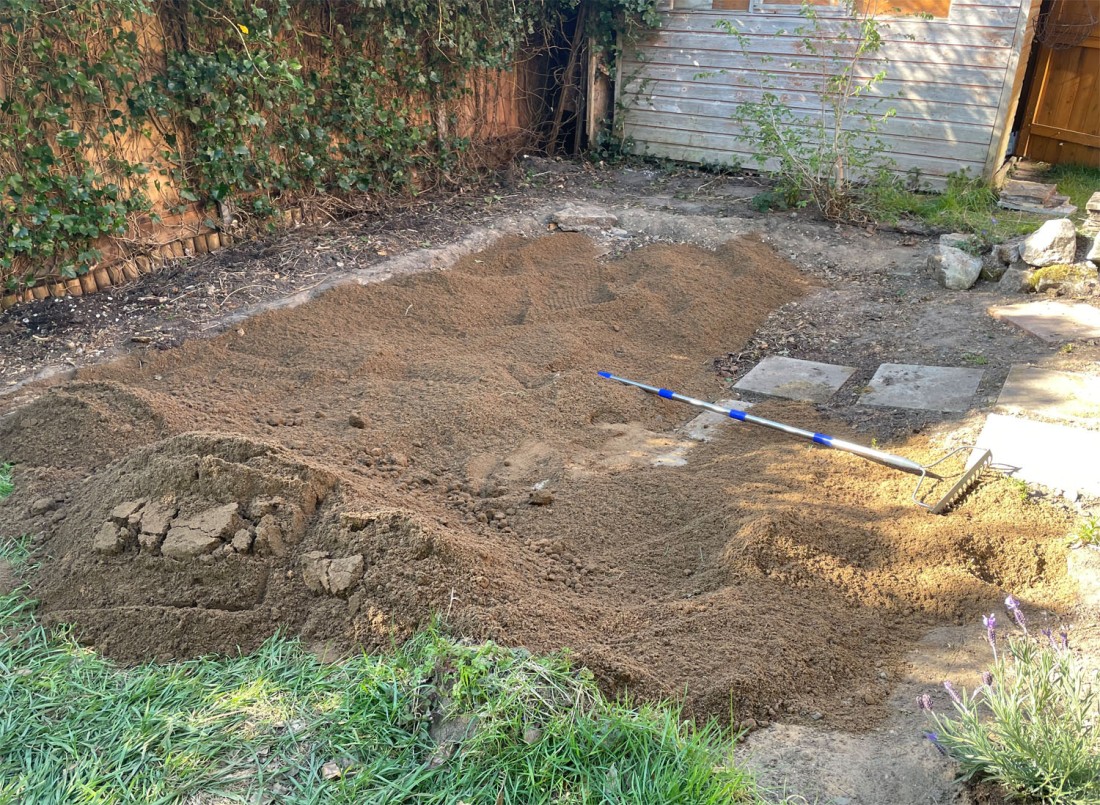It was a fish pond, but that was many lifetimes ago – well, lifetimes of insects, at least. By the time that I purchased this house, it was nothing but woodchips and invasive non-native plants like buddleja, sporting little wildlife and shaded by a crumbling wooden canopy.

Down it came. And out with it the wood decking, cracked concrete, a carpet lining, and enough plastic to wrap a small car. I also found a gardening knife, a forgotten water butt, a beer can and two jigsaw pieces – but inch by gruelling inch, the rectangle was cleaned into a blank page.

Still not much use for wildlife. Next step: rebuild the soil profile. While gardeners and farmers generally want well-fertilised soil, wildflowers thrive on the opposite. No hope of restoring them on woodchips, so I purchased 700 kilograms of low nutrient sandy soil, typical of this corner of East Anglia.

On which was sprinkled a seed mix that was a good match for those found locally, and it was nature’s turn to get to work.

The months have rolled on. Wild things have sprung up from the dust.

Most of them are perennials and will not show their flowers until next summer, but they have subtly revealed themselves by their leaves: cowslip, yarrow, knapweed, lady’s bedstraw, and many more. Birdsfoot trefoil has jumped the schedule and sprinkled tiny beaks of sunshine amidst the green.

Most days, it is abuzz. Bees, hoverflies and butterflies have begun to visit. Perhaps the hedgehogs waddle through too.
We are not there yet, because nature is never truly ‘there’ – it changes with the seasons and with age, playing to pioneers when young, supporting rarities when old. I will be watching as this little newborn meadow continues its journey.